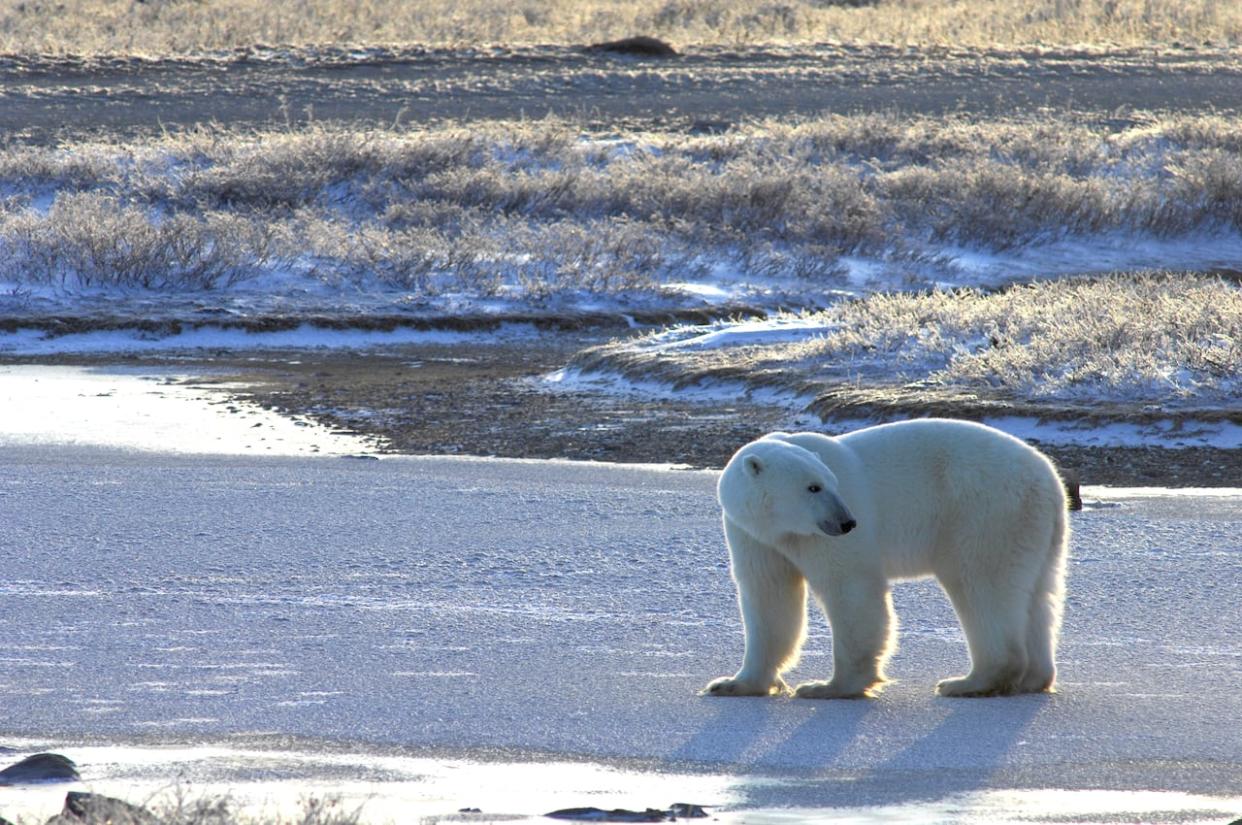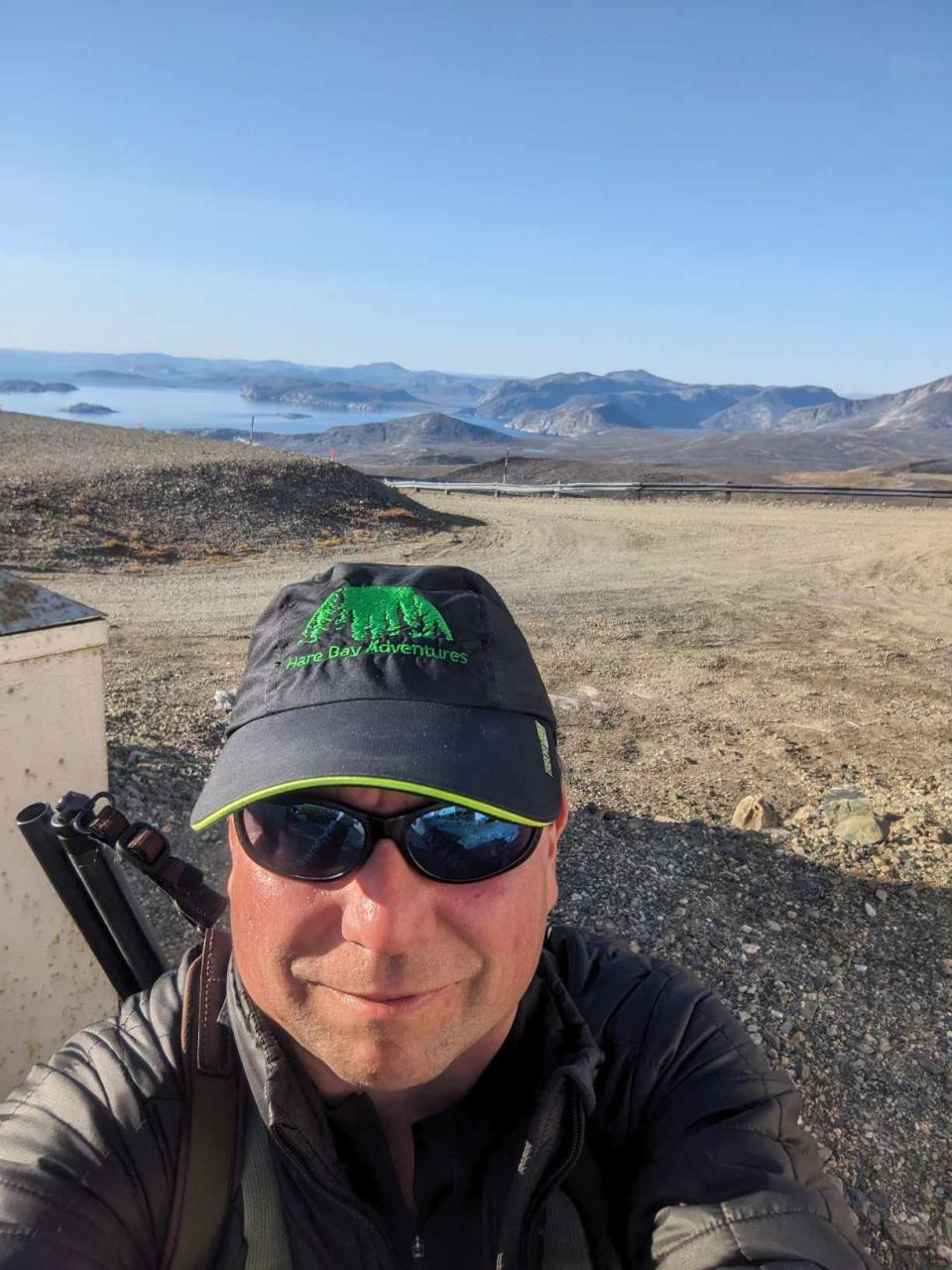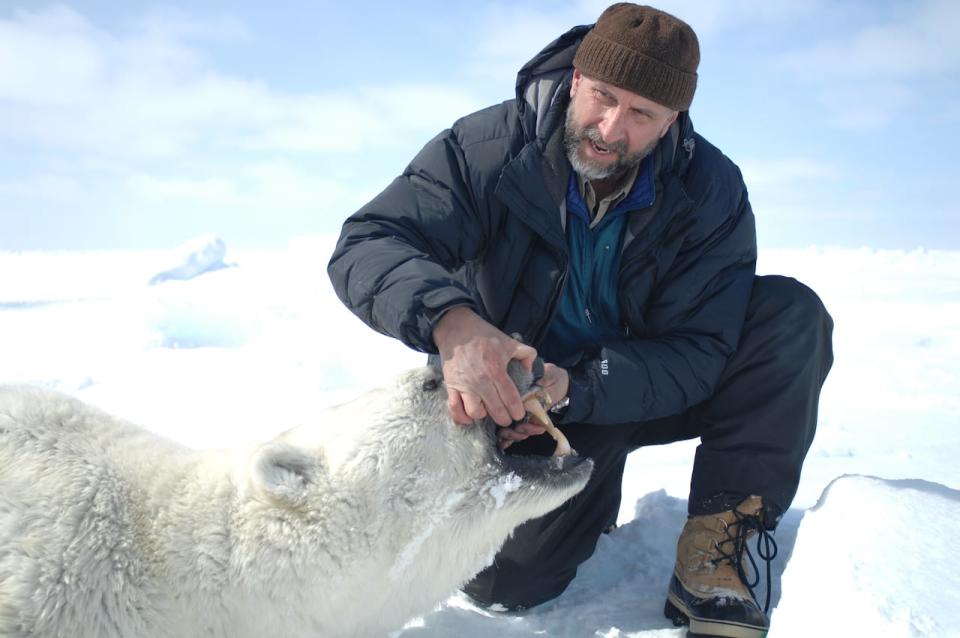As polar bears enter peak feeding season, experts offer tips on how to avoid meeting them in the wild


Sea ice forming later in the spring can force polar bears onto land for longer periods of time, leading to more encounters between bears and people. (Submitted by Andrew Derocher)
With climate change causing more polar bear encounters, one expert has advice on how to decrease the odds of coming into contact with the animal.
Duane Collins is a certified polar bear guard, someone who has training to detect polar bears as well as monitor areas for possible activity. He says one of the public's biggest misconceptions is that polar bears hunt humans.
"Like most wild animals, a polar bear simply wants to be left alone," Collins told CBC News in a recent interview. "Probably the best advice for living in and around polar bear country is leaving them alone."
While it's true they are potentially dangerous animals, he said humans aren't a natural part of their diet. Instead, they have a very specialized carnivorous diet, 90 per cent of which is seal.
LISTEN | Polar bear guard Duane Collins says the best way to co-exist with polar bears is to avoid them:
Collins, who also owns outdoor tourism company Hare Bay Adventures, advised people to avoid areas where there are reported polar bear sightings. When polar bears are on land, he said they can be "opportunistic."
He said there is a lot people can do as individuals and communities to reduce encountering the animals, including making sure garbage is stored securely and making sure the scent from garbage isn't "wafting across the landscape of a polar bear."
"It literally goes nose first through the universe," Collins said, describing the animal's acute sense of smell.
He said anything people can do to cut down on smells is beneficial to keeping polar bears away, like cleaning out a barbecue or not keeping pet food outdoors.

Certified polar bear guard Duane Collins says the animals want to spend as much time as they can out in the sea. (Submitted by Duane Collins)
As for how the bears arrive in the communities, it's usually related to sea ice patterns. However, Andrew Derocher, University of Alberta professor of biological sciences, said climate change's impact on sea ice is causing polar bear sightings to rise.
Derocher, who has studied polar bears for 40 years, said their Arctic habitat is warming faster than other parts of the world.
"Sea ice is melting earlier in the springtime and forming later in the autumn," said Derocher.
This means polar bears are pushed off sea ice earlier in the spring, move onto land, and then don't head out until later in the autumn, he explained.
"During this on-land period is when the bears are coming into conflict with people."
That lengthier on-land period poses a lot of biological risks.
For every day the polar bears are on land and not feeding, Derocher said, they use up one kilogram of body weight. He said if the ice-free period is four months long, a bear uses up about 120 kilograms of body weight. While some bears will be able to lose that much weight, others don't have that "stored energy" and will be the ones who come closer to communities and dumps.

Biologist Andrew Derocher captures polar bears in Hudson Bay, monitoring the health of the population. (Submitted by Andrew Derocher)
"It doesn't matter where you are in polar bear range, we're seeing far more polar bears coming into communities, coming into peoples' cabins or camps. And these are usually food-stressed animals," said Derocher.
Derocher said sea ice formed late in some areas this year and polar bears are now entering their peak feeding season, which can last until June and dictates how fat the bears will get.
"And if they're not fat, then we'll see a lot more bears around communities," Derocher said.
These hungry animals are often the ones who became dangerous to humans, Derocher added, because they can become predatory.
That's why polar bear guard Duane Collins said he always emphasizes that people should not go near these creatures.
"If you can at all, avoid it. Never go out, even if you are armed to confront a bear, unless it's absolutely necessary."
He also said Newfoundland and Labrador's polar bear population is "robust."
Download our free CBC News app to sign up for push alerts for CBC Newfoundland and Labrador. Click here to visit our landing page.


